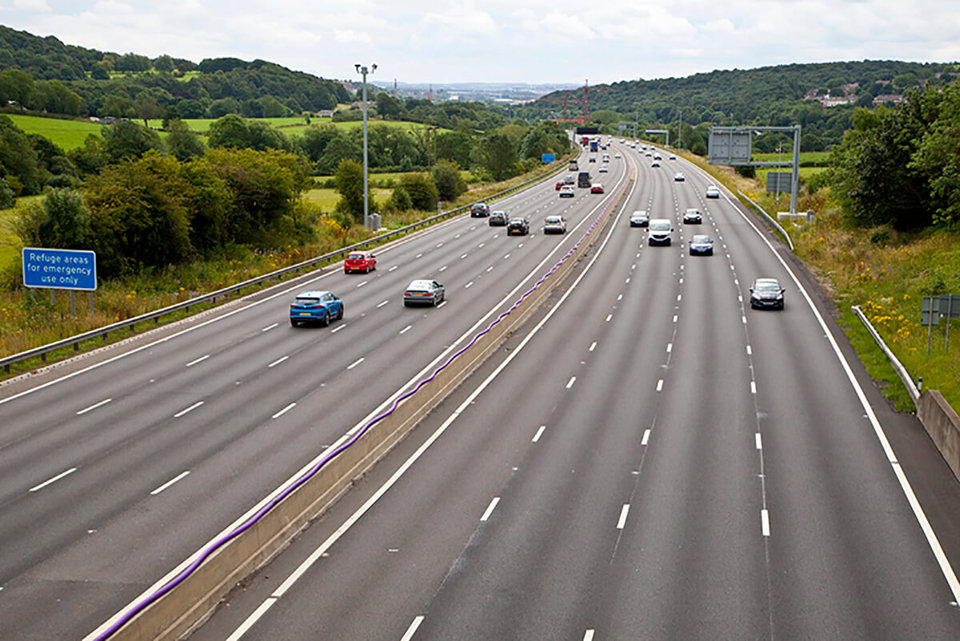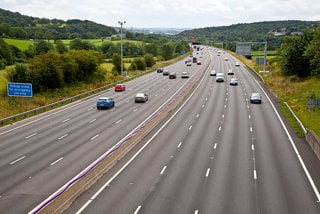Smart motorways are as safe as conventional ones, according to the latest data from Highways England, paving the way for a full roll out across the country.
“The days of conventional motorways are over,” said Highways England chief executive Jim O’Sullivan. “Our next challenge is to connect the country, to create a connected spine for continuous traffic management.”
Smart motorways were introduced in 2006 on the M42 and are intended to increase capacity and reduce congestion at busy times by using the hard shoulder as a running lane and using variable speed limits to control traffic flow.
“We are seeing fewer breakdowns on smart motorways – people take maintenance more seriously – and we also have fewer vehicles running out of fuel (5-10% of all breakdowns),” O’Sullivan said. “This is because of the signage pointing to the next fuel station.”
Highways England is now developing its software to handle greater quantities of data, enabling more accurate traffic information. It is trialling vehicle-to-infrastructure (V2X) connectivity on the M2/A2 in Kent, feeding information such as diversion routes straight to a vehicle’s sat-nav.
“This is exciting two-way information using dynamic traffic management to send tailored information to your vehicle,” said O’Sullivan.
“Rather than blanket network coverage, we will reach a point where we know you are going to Dover from the information in your car and then we can give you traffic predictions.”
With safety as Highways England’s top priority, the number of killed and seriously injured (KSI) people on the strategy road network (SRN) fell by 7.6% in 2017 to 1,853, with a similar reduction expected when the 2018 figures are published later this year.
It puts Highways England on track to achieve its 40% reduction in KSI by 2020 (from 2,321 on the 2005-2009 average baseline to 1,393). The organisation’s Government-backed Driving for Better Business (DfBB) programme is playing a key role in getting the message out to fleets.
“It enables organisations of all sizes to access free information about how to improve their work-related road safety and take action to make these improvements,” O’Sullivan told delegates at the DfBB conference earlier this month.
He has a number of recommendations for fleets and drivers travelling on the SRN, including:
“Everyone should put the Highways England phone number into their mobile, as well as the details of their breakdown provider.”
The Health and Safety Executive (HSE) is running pilot projects to improve its own data and reporting.
Martin Temple, HSE chair, told conference delegates: “We want to learn about the history of a journey. Many times, the root cause started somewhere else, not with the driver.”
He criticised the fact that the default position was to blame the driver.
“It’s more than that: it starts in the boardroom, in the big companies. There are many facets that require us and the big companies to work together. We can’t prosecute our way out of this,” Temple said.
Load security was a message that should strike at the heart of the boardroom, underpinning the ethos of health and safety.
HSE recently ran a South Yorkshire pilot which took additional information into consideration, including the site at which vehicles were loaded.
Of 183 vehicles stopped, a “staggering” 164 received a roadside prosecution where the load was so poorly secured that the vehicle was not allowed to continue its journey.
“This creates risk for other road users, those who have to unload it and those who have to clear up the roads. It demonstrates the deadly result of actions that were foreseeable and preventable,” said Temple.
However, HSE is mindful not to overburden with bureaucracy, which is one of the reasons why it is against introducing RIDDOR (reporting of injuries, diseases and dangerous occurrences regulations) for driving at work incidents.






















Login to comment
Comments
No comments have been made yet.